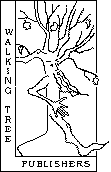
Call for Papers (book project)
"We should look at green again": Representations of Nature in Middle-earth

to be published 2014 by Walking Tree Publishers
Tolkien's portrayal of nature in Middle-earth has been interpreted in a variety of ways, often depending on the context of the reading. Some have seen Middle-earth and its potential destroyer, the Ring, as an allegory of the European continent under the threat of the atomic bomb, while others have embraced it as an artistic expression of the Green movement's agenda in the face of industrial abuse. Some have read nature in Tolkien's work in terms of old myths and religion; yet others take the exhaustive descriptions of the physical environment, textual and cartographic, as a sign that Middle-earth itself is the central protagonist of the stories. Tolkien himself leaves the field open for interpretation, as long as we do not single out one particular perspective as more valid than another —as he states in his famous 1966 foreword to The Lord of the Rings, applicability not allegory is key to the understanding of his literature.
For all these different approaches, it seems safe to say that nature in Middle-earth plays a crucial role not only in the creation of atmospheres and settings that enhance the realism as well as the emotional appeal of the secondary world; it also acts as an active agent of change within the setting and the story.
This planned collection of essays wishes to offer a diversity of approaches to the different roles of nature in Tolkien's literary and artistic works. We are looking for nuanced and multidisciplinary accounts of the ways in which human and non-human (elves, dwarves, hobbits, ents, orcs, etc.) individuals and communities interact with the physical environment. Approaches from different fields of research are thus welcome, applying, wherever appropriate, theories concerning the relationship between our conceptions of nature and “place” on the one hand, and the arts and our perception of society on the other. Here, the works by scholars such as David Abram, Robert Pogue Harrison, Tim Ingold, Barry Lopez, Robert Macfarlane, Simon Schama, Rebecca Solnit, Yi-Fu Tuan and Annie Whiston Spirn may be particularly helpful.
The following is a list of topics that we would like to see explored in the volume (though other proposals will also be taken into account):
Aesthetic and ethical dimensions of nature in Middle-earth: the beauty and meaning of wild and ordered nature in Tolkien's works. We are especially interested in multidisciplinary approaches using perspectives from eco-criticism, philosophy, theology and architecture.
Papers exploring the ways in which the realism of Middle-earth (from the point of view of botany, zoology, geology, geography, etc.) illuminates Tolkien's ideas about the secondary world, and the premises of Escape, Recovery and Consolation (as outlined in his essay On Fairy-stories).
The role of magic and the supernatural in the natural world of Middle-earth.
The adaptation of the natural world of Middle-earth in visual media: artwork, films, comics, graphic novels, videogames, etc., using Tolkien's literary and pictorial representations as a point of reference. Perspectives could also include comparisons between the artistic meta-representations of nature within the literary texts (Hobbit-poetry, plastic arts of Rohan and Gondor, landscaping and gardens of diverse origin, etc.) and those found beyond the texts (sources and inspirations for Tolkien, as well as subsequent representations of nature in Middle-earth on behalf of artists, fans, etc. Is there some sort of discernible tradition being developed?
Approaches centring on the disclosure of how the ambiguity of nature in Middle-earth is key to our understanding of its role within the wider framework of myth and story. Perspectives may include, but will not necessarily be limited to, the following:
Fear and doom, hope and rebirth in the mineral world and mountainous environments.
Images and symbols of death and life, visions of the future and changes in the land related to water: rivers, ponds, fountains, lakes, oceans.
Elements of consolation and threat in forests, woods and trees
Violence and peace in relation to "natural hybrids" and shape-shifters.
The meaning and purpose of the mysterious "Tom Bombadil-digression" in The Fellowship of the Ring, from the point of view of narrative, nature and myth.
Analysis of Middle-earth as protagonist of The Lord of the Rings from the point of view of place and narrative structure.
The evolution of a world: differences in the representation of nature in different literary works, in particular between The Hobbit and The Lord of the Rings. We encourage proposals that take into account the influence of literary genre on the narratives and the textual evolution as shown in Christopher Tolkien's The History of Middle-earth, in particular the four volumes dedicated to The History of The Lord of the Rings, as well as John D. Rateliff's The History of the Hobbit.
The impact of Middle-earth's nature on post-Tolkien fantasy fiction.
If you would like to contribute to this volume, to be published by Walking Tree Publishers in 2014, please submit an abstract (200-300 words) outlining your proposed article together with a short biographical sketch by December 31, 2013. Upon acceptance, full essays are due by June 30, 2014. All contributions should be submitted in English. Please send your abstracts, inquiries and suggestions by email to:
Dr Martin Simonson Email: martin.simonson[at]ehu.es
Please visit the Walking Tree website to learn more about the publishers: http://www.walking-tree.org/
A pdf version of this call for papers is downloadable here.

